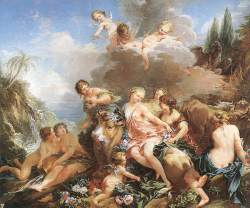 |
| Atlantic auger 0008 by Edward T. Babinski |
p 191 | Cours-la-Reine: avenue that runs along the Seine between the Place de la Concorde and the Grand-Palais. (Sturrock)
p 191 | "Beauvais armchair illustrating the Rape of Europa...": this chair and this 1747 painting by François Boucher:
p 191-2|"... pictures of society...": Does this refer to Proust's first book, Pleasures and Regrets ? (full French text of Les Plaisirs et les Jours is here)
p 193 | The Consulate ran from 1799 to 1804, with Napoleon the de facto ruler of France as First Consul…; the Directory had lasted from 1795 to the coup d’état of November 1799, when Napoleon seized power. The two regimes fostered distinct cultural styles. (Sturrock)
 |
| Firebird by Bakst |
p 193 | Aigrette (from the French for egret) refers to the tufted crest or head-plumes of the egret, used for adorning a headdress; also, any similar ornament made of gems.
p 194 | Avatar: A temporary manifestation or aspect of a continuing entity, i.e., occultism in its present avatar.
p 195 |"... gimlet eyes of nationalist ladies..." : sharp or piercing, as this tool.
p 195 | While searching for the Princesse d'Epinoy, I found this wonderful essay on nobility and titles in France.










